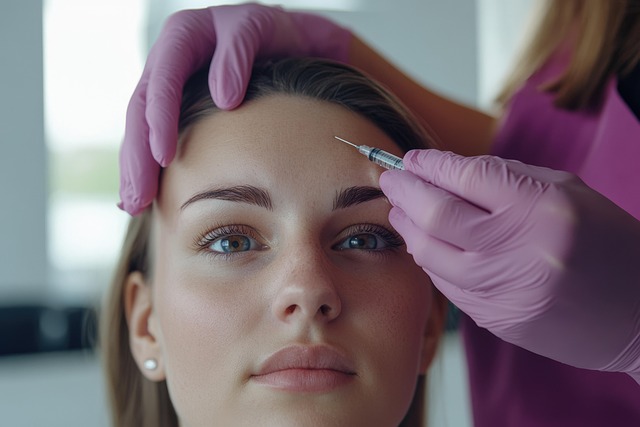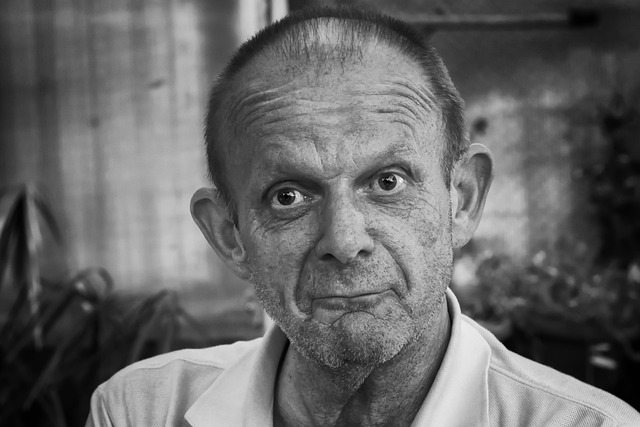Non-surgical facelifts, or facial rejuvenation procedures, have gained popularity for restoring a youthful appearance without surgery. These treatments stimulate collagen production and improve skin elasticity using techniques like injections (fillers or toxins), energy-based devices, and massage. A holistic approach starts with understanding individual needs and choosing the right technique. Modern methods leverage advanced technologies like radiofrequency, ultrasound, and microneedling for safe and effective results. Non-invasive procedures offer minimal downtime, rapid recovery, and reduced risks compared to surgical facelifts. Ideal candidates have mild to moderate skin aging and prefer natural rejuvenation. Proper post-treatment care is crucial for maintaining results.
“Discover the secret to achieving a youthful glow without surgery. This comprehensive guide delves into the world of non-surgical facelifts, offering a transformative journey towards a revitalized complexion. From understanding the science behind facial rejuvenation to exploring popular techniques and safety considerations, we provide an in-depth look at this popular procedure. Learn how these non-invasive approaches can benefit your skin, who they’re suitable for, and the longevity of their results. Uncover the key to embracing a confident, rejuvenated you through facial rejuvenation.”
Understanding Non-Surgical Facelifts: A Comprehensive Guide

Non-surgical facelifts, also known as facial rejuvenation procedures, have gained significant popularity in recent years due to their ability to offer a youthful appearance without the invasiveness of traditional surgery. These treatments focus on stimulating your body’s natural collagen production and improving skin elasticity, resulting in a more lifted, firm, and toned face. The procedure involves advanced techniques such as injections (fillers or toxins), energy-based devices, and specialized massage to redefine facial contours and reduce signs of aging like wrinkles, sagging skin, and fine lines.
A comprehensive guide to non-surgical facelifts begins with understanding that it’s a holistic approach to skincare. It involves assessing your unique needs, discussing goals with a qualified practitioner, and choosing the right techniques for optimal results. Unlike surgical options, these treatments offer minimal downtime and faster recovery, making them ideal for individuals seeking a more subtle yet effective way to enhance their facial aesthetics.
The Science Behind Facial Rejuvenation Techniques

The science behind facial rejuvenation techniques involves a multi-faceted approach aimed at stimulating the body’s natural healing processes and enhancing collagen production. Key methods include the use of advanced technologies like radiofrequency, ultrasound, and microneedling, which gently manipulate the skin’s structure to improve elasticity and reduce the appearance of fine lines and wrinkles. These procedures promote the growth of new, healthy collagen fibers, providing long-lasting results without the need for invasive surgery.
Additionally, many modern facial rejuvenation treatments incorporate active ingredients and peptides that mimic the body’s natural proteins, further boosting collagen synthesis and hydrating the skin. This combination of physical manipulation and biochemical stimulation ensures effective and safe procedures that can reverse signs of aging, leaving the skin looking youthful, radiant, and rejuvenated.
Benefits of Choosing a Non-Invasive Approach for Face Lifting

Choosing a non-invasive approach for facial rejuvenation offers a multitude of benefits, making it an increasingly popular option for those seeking to enhance their appearance without surgery. One of the key advantages is minimal downtime and recovery time. Unlike surgical facelifts, which can result in several days or even weeks of healing, non-surgical procedures often allow patients to resume their normal activities almost immediately. This means no time off work or lengthy periods of discomfort.
Additionally, non-invasive facial lifting techniques are less risky than surgery, as they do not involve incisions or extensive manipulation of the skin and underlying tissues. This reduced risk of complications is a significant draw for many individuals who still want to achieve a youthful look but prefer to avoid the potential challenges associated with surgical interventions. The result is a more natural-looking enhancement that can dramatically improve one’s overall facial appearance.
Popular Methods for Achieving a Youthful Complexion

In the quest for achieving a youthful complexion, several non-surgical facial rejuvenation methods have gained popularity due to their effectiveness and minimal downtime. One of the most sought-after techniques involves the use of advanced skincare products infused with powerful antioxidants and peptides. These ingredients work by stimulating collagen production, which is essential for maintaining skin elasticity and reducing fine lines and wrinkles.
Another popular method is microneedling, a process that utilizes tiny needles to create micro-injuries in the skin, triggering a healing response that results in improved texture and a more radiant appearance. Additionally, radiofrequency (RF) treatments have emerged as a game-changer in facial rejuvenation. RF technology heats deep layers of the skin, stimulating collagen renewal and providing visible lifting effects without any invasive procedures. These methods offer individuals a wide range of options to achieve their desired level of facial rejuvenation, catering to diverse skin types and concerns.
Safety and Effectiveness: What to Expect During the Procedure

Facial rejuvenation procedures, including non-surgical facelifts, have gained popularity as a safe and effective way to combat the signs of aging. During the procedure, specialized techniques are employed to lift and tighten the skin, reducing the appearance of wrinkles and sagging. The safety aspect is paramount, with these treatments utilizing advanced technologies and minimal invasiveness to ensure minimal downtime and reduced risks compared to surgical alternatives.
Patients can expect a comprehensive consultation beforehand to discuss expectations and potential outcomes. The procedure itself is usually quick, often taking just a few hours, and is performed under local anesthesia. Afterwards, mild swelling and temporary redness are common, but these subside rapidly. Facial rejuvenation techniques offer a significant advantage in that they allow individuals to achieve youthful-looking skin without the extensive recovery periods associated with surgery, making it an increasingly preferred choice for those seeking a more natural approach to facial aesthetics.
Post-Treatment Care: Tips for Optimal Results

Post-treatment care is an essential aspect of achieving optimal results from a non-surgical facelift. Here are some tips to ensure your skin recovers and continues to radiate youthful vibrancy. Firstly, it’s crucial to maintain hydration; drink ample water throughout the day to support skin elasticity and reduce puffiness. Additionally, gentle cleansing routines with mild, pH-balanced products will help keep the treated area clean without irritating sensitive skin.
Avoiding direct sun exposure is vital for several days post-procedure to prevent hyperpigmentation and potential damage to the rejuvenated skin. Always use broad-spectrum sunscreen with at least SPF 30 when outdoors. Gentle, hydrating moisturisers can be introduced after 24 hours to nourish the skin, following the advice of your healthcare provider. Remember, consistent care and patience are key to seeing and maintaining the facial rejuvenation benefits over time.
Who is a Candidate for Facial Rejuvenation Procedures?

Facial Rejuvenation procedures are becoming increasingly popular as a non-invasive way to combat the signs of aging. Ideal candidates for these treatments are individuals concerned about fine lines, wrinkles, and overall skin tone and texture, who prefer a natural approach to rejuvenation over surgical options. This often includes those with mild to moderate skin aging, where the primary focus is on lifting and firming specific areas without extensive incisions or recovery periods.
Factors such as skin elasticity, general health, and lifestyle play a significant role in determining suitability. Healthy individuals with good skin elasticity are typically better candidates, as this procedure relies on stimulating collagen production to achieve results. Smokers and those with certain medical conditions may be advised against it due to potential complications. Consulting with a dermatologist is crucial to assess individual needs and determine if non-surgical facelift procedures are the best course of action for achieving youthful-looking skin.
Exploring the Longevity of Non-Surgical Face Lifts

Non-surgical facelift procedures have gained significant popularity as a facial rejuvenation option, offering a way to combat signs of aging without invasive surgery. These treatments focus on stimulating the skin’s natural healing process and collagen production, leading to improved skin elasticity and a more youthful appearance. One of the most appealing aspects is their longevity; results can last for several months, providing individuals with a sustained sense of confidence and a refreshed look.
Compared to surgical options, non-surgical facelifts offer a quicker recovery time and minimal downtime, making them an attractive choice for those seeking a more subtle yet effective rejuvenation method. The long-lasting effects are achieved through various techniques, including injections of fillers or stimulants that enhance the skin’s structure and volume, as well as advanced technologies that target specific concerns like sagging skin or fine lines.
